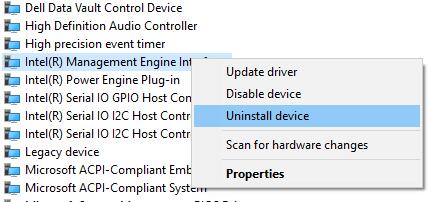
AMD's chipsets instead use several PCIe lanes to connect with the CPU while also providing their own PCIe lanes, which are also provided by the processor itself. The Intel Management Engine was also moved to the PCH starting with the Nehalem processors and 5-Series chipsets. The FDI is used only when the chipset requires supporting a processor with integrated graphics. Two different connections exist between the PCH and the CPU: Flexible Display Interface (FDI) and Direct Media Interface (DMI). The system clock was previously a connection and is now incorporated into the PCH. clocking) in addition to all of the southbridge's functions, replacing it. The PCH then incorporates a few of the remaining northbridge functions (e.g. The northbridge and its functions are now eliminated completely: The memory controller, PCI Express lanes for expansion cards and other northbridge functions are now incorporated into the CPU die as a system agent (Intel) or package as an I/O chip (AMD Zen 2) As a solution to the bottleneck, several functions belonging to the traditional northbridge and southbridge chipsets were rearranged. Under the Hub Architecture, a motherboard would have a two piece chipset consisting of a northbridge chip and a southbridge chip. Over time, the speed of CPUs kept increasing but the bandwidth of the front-side bus (FSB) (connection between the CPU and the motherboard) did not, resulting in a performance bottleneck. The PCH architecture supersedes Intel's previous Hub Architecture, with its design addressing the eventual problematic performance bottleneck between the processor and the motherboard. AMD has its equivalent for the PCH, known simply as a chipset, no longer using the previous term Fusion controller hub since the release of the Zen architecture in 2017. As such, I/O functions are reassigned between this new central hub and the CPU compared to the previous architecture: some northbridge functions, the memory controller and PCI-e lanes, were integrated into the CPU while the PCH took over the remaining functions in addition to the traditional roles of the southbridge. These include clocking (the system clock), Flexible Display Interface (FDI) and Direct Media Interface (DMI), although FDI is used only when the chipset is required to support a processor with integrated graphics. The PCH controls certain data paths and support functions used in conjunction with Intel CPUs. It is the successor to the Intel Hub Architecture, which used two chips - a northbridge and southbridge instead, and first appeared in the Intel 5 Series.

The Platform Controller Hub ( PCH) is a family of Intel's single-chip chipsets, first introduced in 2009. An Intel DH82H81 PCH with its die exposed


 0 kommentar(er)
0 kommentar(er)
